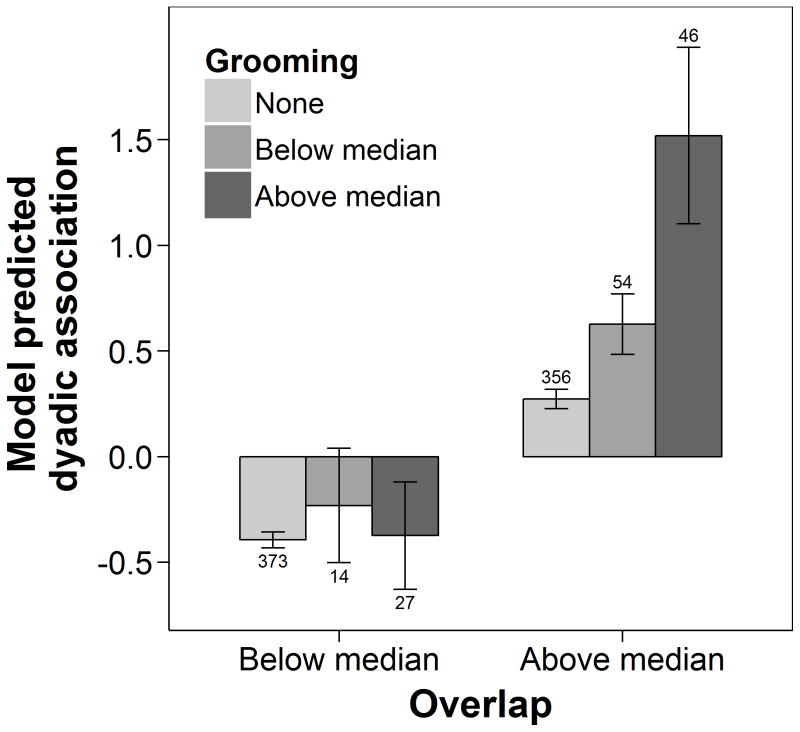Figure 2.
Model predicted mean (± 95% CI) z-transformed half-weight index of dyadic association in female chimpanzees in relation to z-transformed core area overlap and a dyadic grooming index that measures frequency of grooming in relation to observation time and opportunity (see text for definition of measures). For illustration purposes, we binned overlap z scores into below and above the median across all dyads and periods. As the grooming index was highly skewed towards zero values, we created three groups: no grooming recorded, and below and above median of all nonzero grooming indices in a given period. Numbers above or below error bars indicate the number of unique dyads in each group, across all periods.

